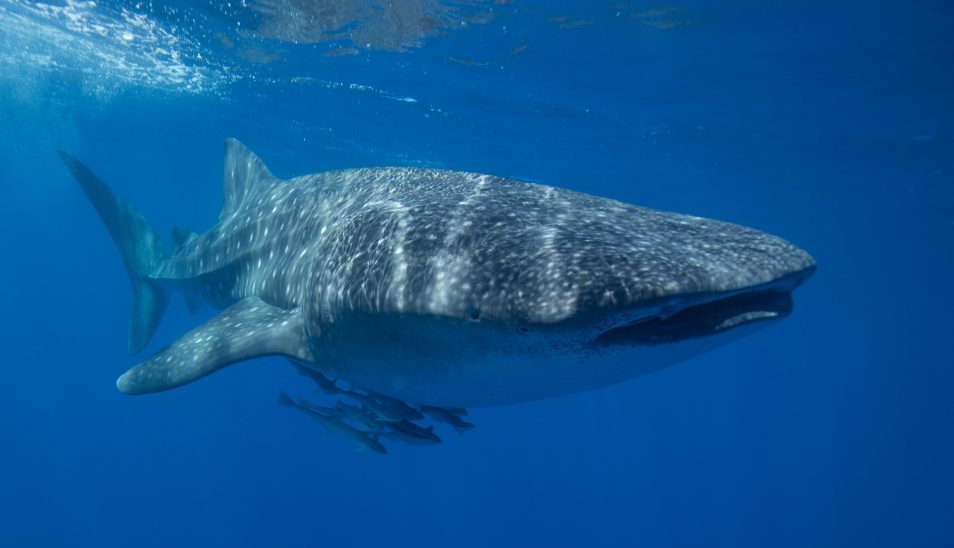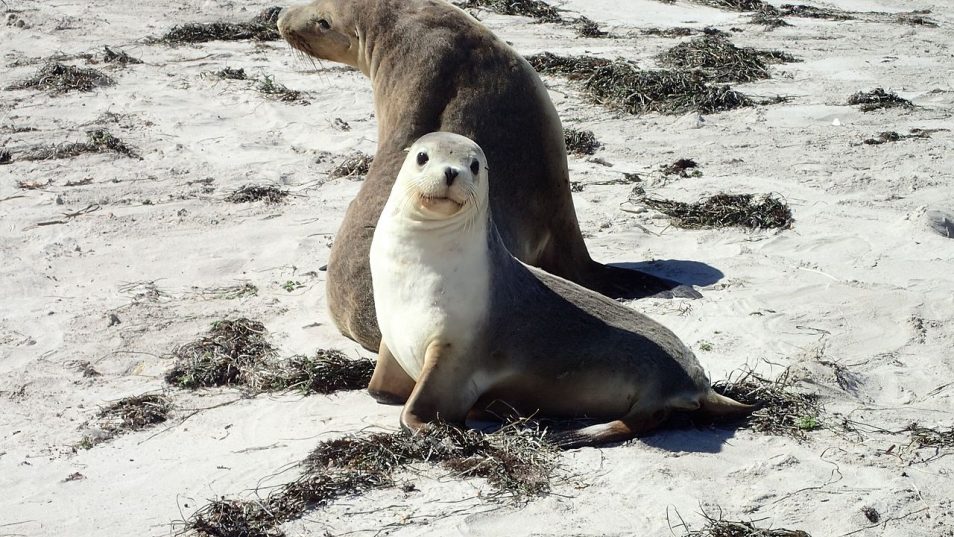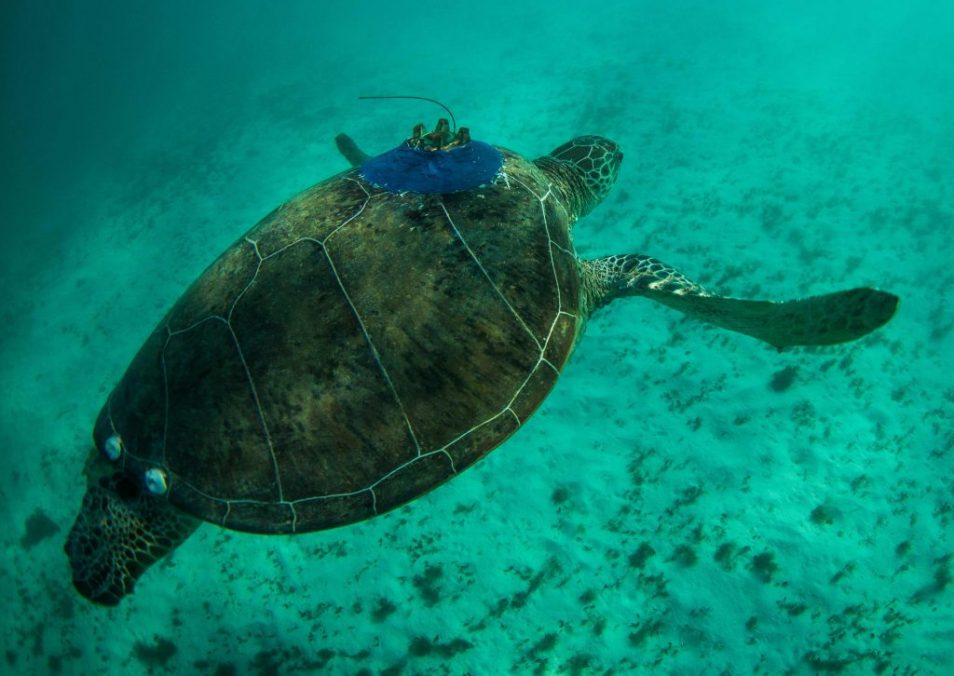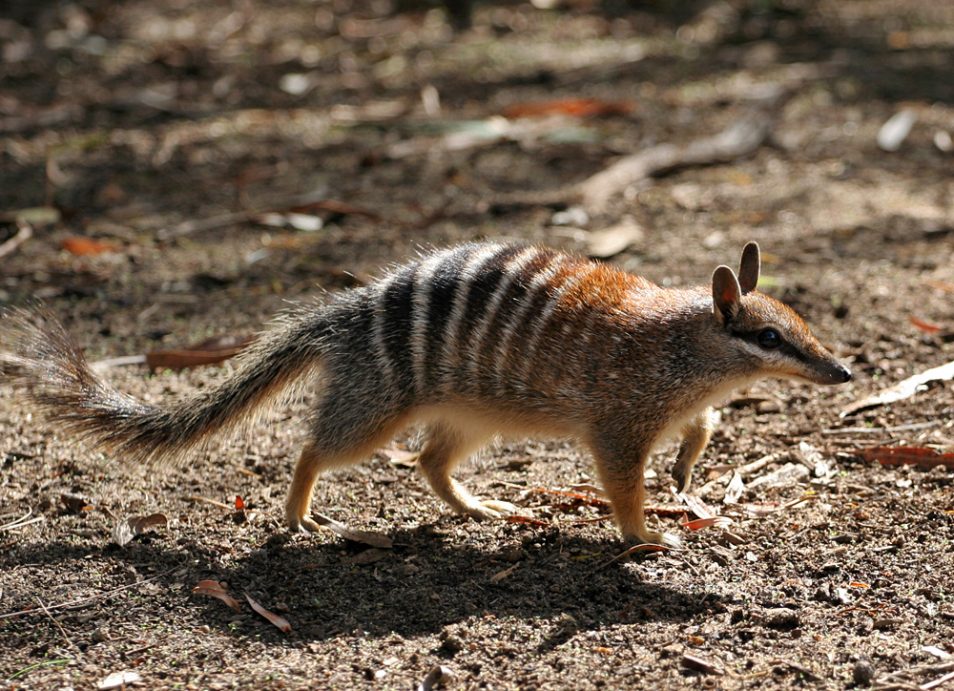“Three oceans circle Australia. The cold Southern Ocean. The calm sanctuary of the Pacific Ocean with its reefs and islands. The warm Indian Ocean that supports schools of awe-inspiring predators. Together the three oceans create a rich mix of marine diversity and an explosion of life, in the Magical Land of Oz.”
So begins the first episode of the ABC’s new nature documentary, the Magical Land of Oz. Did you catch the premiere last Sunday? Episode 2 airs this Sunday at 7:40pm, and you can still send us your photos and help protect our magical land!
But first, let’s take a closer look at three of the magnificent marine animals from the new doco.

Whale sharks are filter feeders. They just jut out their jaws (sometimes 1.5 m wide!) and passively filter everything in their path. Fortunately for us, it’s krill that they love best.
The gentle giants: Whale sharks, Ningaloo Reef
Whale sharks are the largest fish in the sea — they can grow to 12 metres in length, and weigh 11 tonnes. Scientists estimate that they may live to over 100 years old, reaching maturity at about 30.
Whale sharks live throughout the world’s tropical and warm, temperate seas, from Kenya to Indonesia. In Australia, they gravitate to Ningaloo Reef in Western Australia, because it provides them with oodles of their favourite food — krill!
Whale sharks are usually seen alone. But Ningaloo Reef is one of the few places on the planet where they’re seen, regularly, in schools (and in near-shore waters).
The slow moving sharks visit our iconic western reef from March to September. But they’re migratory, and have been recorded travelling thousands of kilometres in all directions. Whale sharks may be enormous, but we don’t really know where they travel, or how deep they dive.

CSIRO research boat with a whale shark in Ningaloo. Image: Richard Pillans CSIRO
So our scientist have placed trackers whale sharks in Ningaloo reef. We want to know how they interact with our patch of reef, and how where in the world they go after saying ‘hooroo’ to the sandgropers of Western Australia.
Our tags have revealed that whale sharks travel as deep as 1.8km from the ocean’s surface! If you want to see where they swim (hint – it’s a long way!) – visit our Google Map, whale-shark-style.
Our scientists also conducted a world first by collecting DNA samples from whale sharks at Ningaloo, to determine their age. This whale shark research is just one part of our Ningaloo Outlook research project, a $5.4 million, five-year partnership with BHP. To dive a little deeper, visit our blog on the mysterious beasts of Ningalooo Reef.
The playful predators: Sea lions, Great Australian Bight.

“What’re you doing back there, kiddo?” An Australian Sea Lion mother and cub on Pearson Island, in South Australian waters. Image: Su Fraser.
The islands in the Great Australian Bight are home to the nursery grounds to the world’s most endangered sea lion — the Australian sea lion. Did you see their playful antics on the Magical Land of Oz?
Australian sea lions like living on sandy beaches, usually in isolated bays and sheltered areas. We don’t know a lot about their diet, but they likely eat fish, invertebrates (including octopus and squid) and maybe even the occasional penguin! Sadly, they were once hunted in large numbers by humans.
Sealing was Australia’s first commercial industry and in the early 1800s seals were indiscriminately hunted, resulting in a massive reduction in numbers and contraction in range, with local extinctions. Numbers remained low for the next 150 years until they were protected in the 1970s.
Stretching from Cape Otway in Victoria to Albany in Western Australia, the Bight is thought to contain the greatest biomass of apex predators in all of Australia’s coastline. Little has been known about the Bight but, now, after four years of research, we’ve helped to create one of the world’s largest tracking databases. The database reveals when these predators come and go, where they like to feed and breed, and whether their numbers are growing or declining. It’s all part of the Great Australian Bight Research Program.
The roaming reptiles : Green Turtles, Great Barrier Reef.

A green turtle cruises over the reef. Image: Kydd Pollock; USFWS – Pacific Region
It was one of the most awe-inspiring parts of the Magical Land of Oz. Every year, for 1000s of generations, female green turtles return to Raine Island off the coast of Queensland to lay their eggs. One shot shows that more than 14,000 individual females can come ashore to lay their eggs in a single night! It’s a sight to behold. You can see a small snippet here.
Each female green turtle can weigh more than 200kg, so hauling her body up on the sand is no small feat. Once she’s dug a deep hole in the sand with her flippers, she lays about 100 eggs and covers them with sand, only to return to the sea once more. This was the very same island where she was born, many years before.
The hatchlings emerge about two months later and make a frantic dash to the water. It’s estimated that only one in 1000 of the hatchlings will make it to adulthood. Green turtles travel on currents all around Australia … and that’s where our research comes in!

Playing tag: satellite trackers and ultrasounds are helping us understand more about turtle behaviour. Image: Richard Pillans
Over in Western Australia, our scientists have fixed over 150 satellite tags to turtles in Ningaloo Reef. They use either acoustic, satellite or flipper tags, as part of Ningaloo Outlook, mentioned previously. The tags have shown a range of behaviour — some turtles have travelled over a thousand kilometres. But other turtles have stayed in one spot, such as Jeff, a male who only travelled away from his feeding grounds for one week, to mate. The tags last about a year and give us a better picture of the turtle’s movements over time.
We’re also using ultrasound technology to detect the sign of early life in female turtles. Our research helps us to understand green turtles’ behaviour, where they travel to, what they eat, and importantly, where they go to nest, to ensure their conservation. It’s all part of our work to protect these peaceful roaming reptiles. Learn more about turtle ultrasound here!
What’s in store for Episode 2?
Like our ancestors, so many millions of years before, we’ll be making the move from the ocean to land. Episode 2 of the Magical Land of Oz will feature all those flying, digging, hopping and scurrying creatures that live alongside us, on land. Insider info: we believe there will be numbats! Tune in to the ABC at 7:40pm this Sunday to see these adorable, long-tongued marsupials in action.
I love taking photos of animals, now what?
Well fancy that! You’re in luck. We want you to send us your best (or worst!) animal, plant and fungi photos. The Atlas of Living Australia have partnered with the ABC for their nature doco, and we want to gather as many citizen scientist photos as we can. So get snap happy!

Stripes alive! The numbat and it’s incredibly long tongue will feature on episode two of Magical Land of Oz. Photo: Martin Pot.

